The Pyrophone | part of the Chalice Symphony for Stella Artois
Technically, it's not possible for a whale to front a death metal band. But if one could, it would sound a lot like this Pyrophone.
The Pyrophone is part of the Stella Artois Chalice Symphony, a quartet of instruments I designed for a performance with Cold War Kids. Each instrument uses Stella Artois's iconic chalice to make music in a different way — bowing them, striking them, using them as tuned resonators, or using their shapes to form vowels in vibrating columns of air.
They are designed to musically complement each other with a variey of timbres, pitches, and expressive features. Here's the short promotional video.
I designed three of the four instruments to have roughly the proportions of a person so they would feel like a family of characters. Here is the little family together.
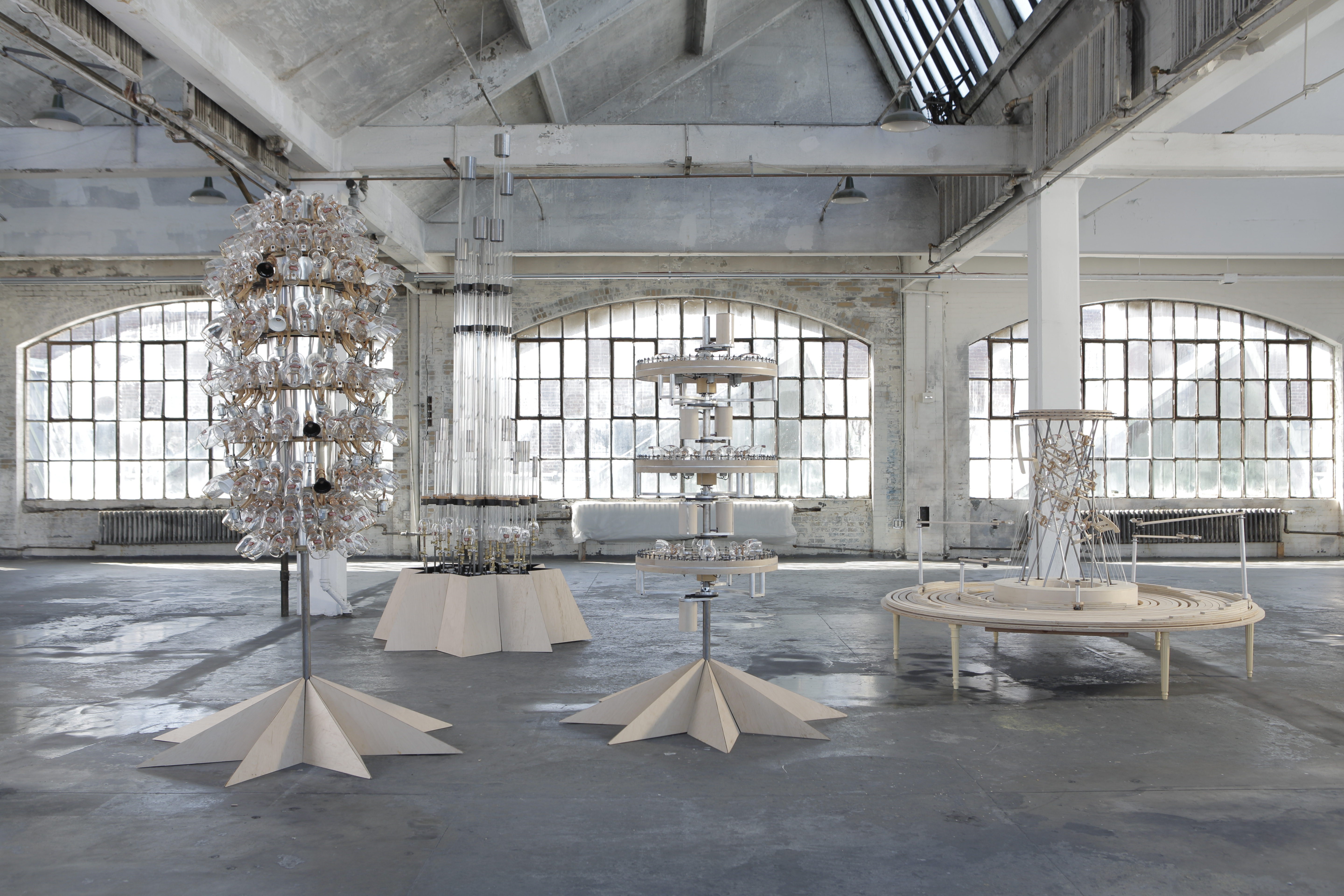
The Pyrophone
The Pyrophone works a bit like a pipe organ. It has long, carefully-tuned tubes which resonate at specific frequencies. In an organ pipe, the initial turbulent energy comes from a reed or from a whistle-like structure called the mouth. But in a pyrophone, it's the flame itself that vibrates — much like the reed of a saxophone. So the flame is not a gimmicky way to move the air. It's a uniquie oscillator that produces a uniquely deep and rich sound.
Much like early humans, our first challenge was learning to control fire. Karl did a brave job of creating electromechanical valves to control the flow of low-pressure propane gas. We learned that we would need high pressure gas to make these tubes sing — and that controlling high-pressure flammible gas with homemade technologies was too dangerous for even us. So we invented a system that moves the flame nozzles instead of controlling the gas flow.
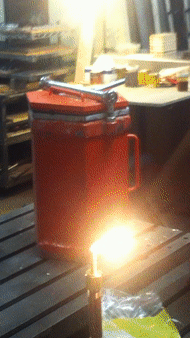
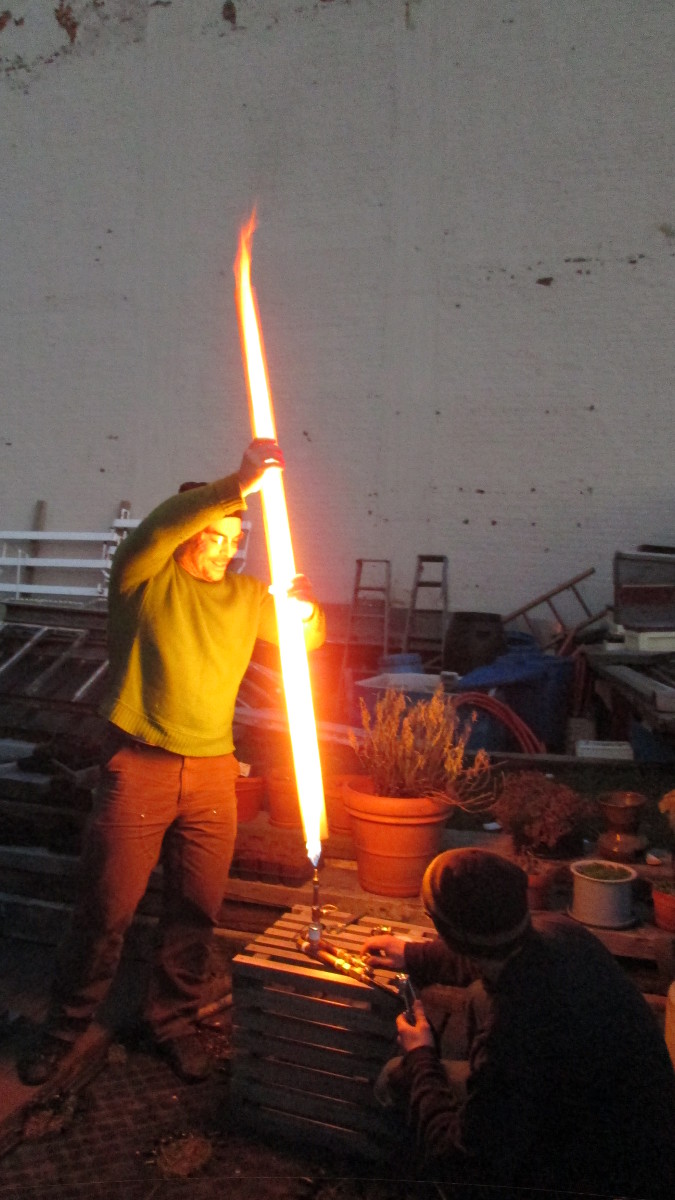
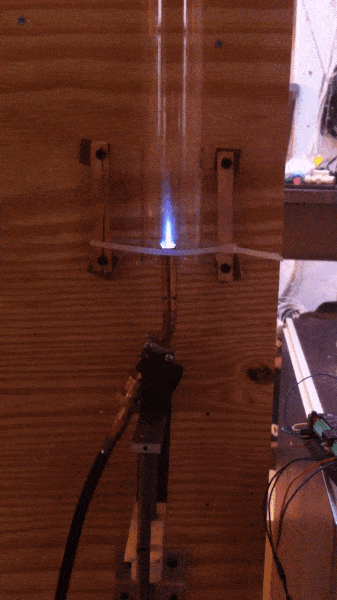
Matt used math and empirical reality checks to find exactly which lengths of glass tubing created which pitches.
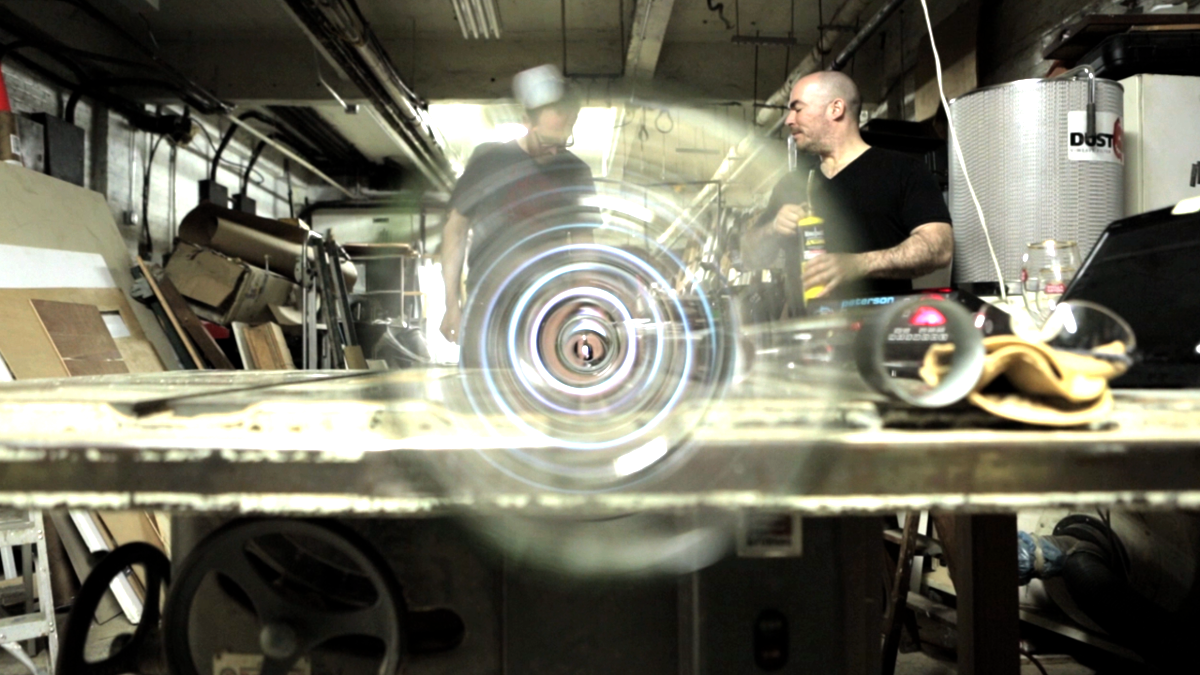
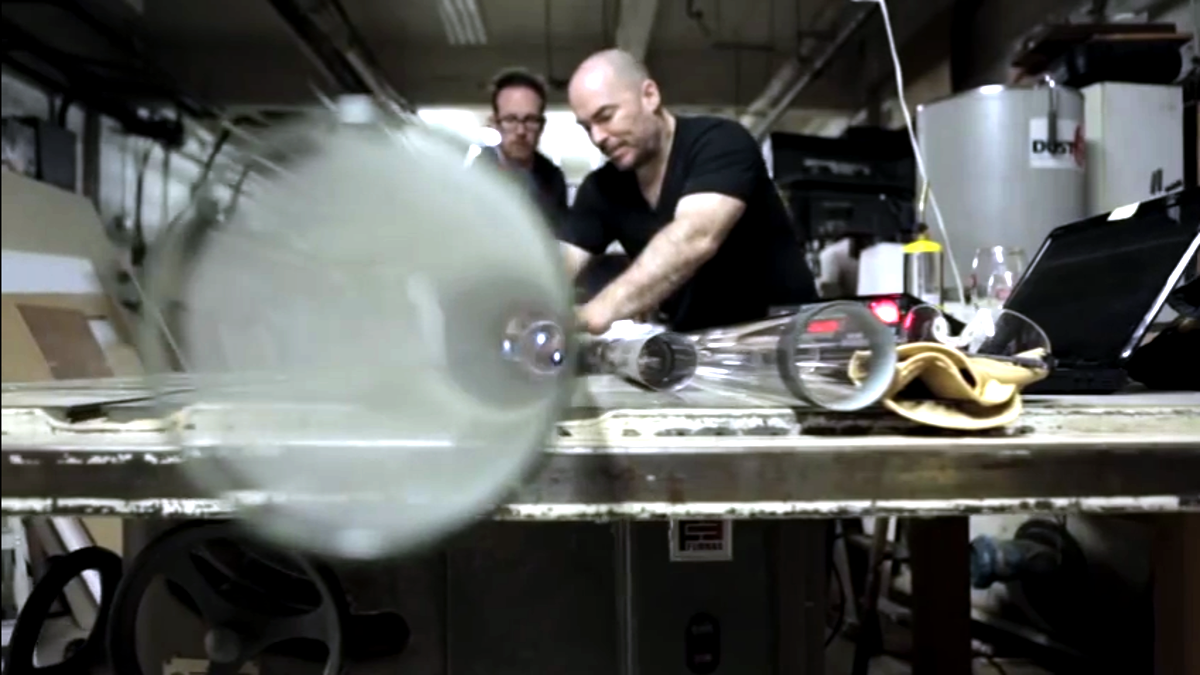
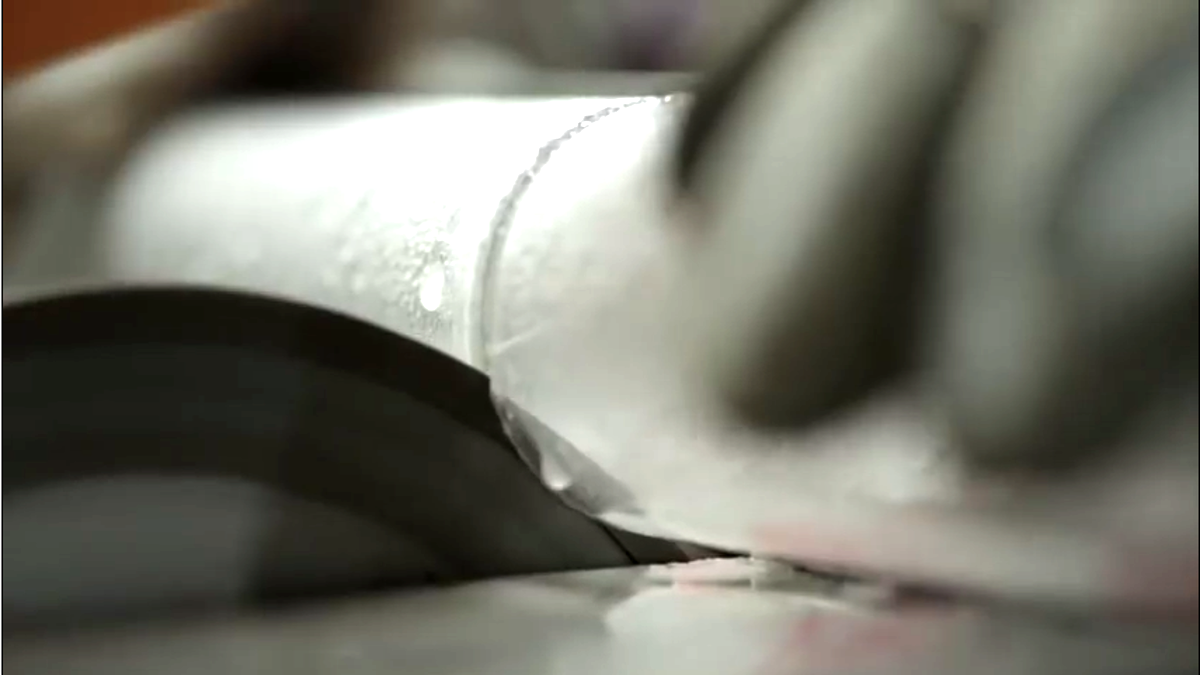
The sculptural aspects were all drafted by hand using pencil math. The metalwork and woodwork took weeks to fabricate correctly.
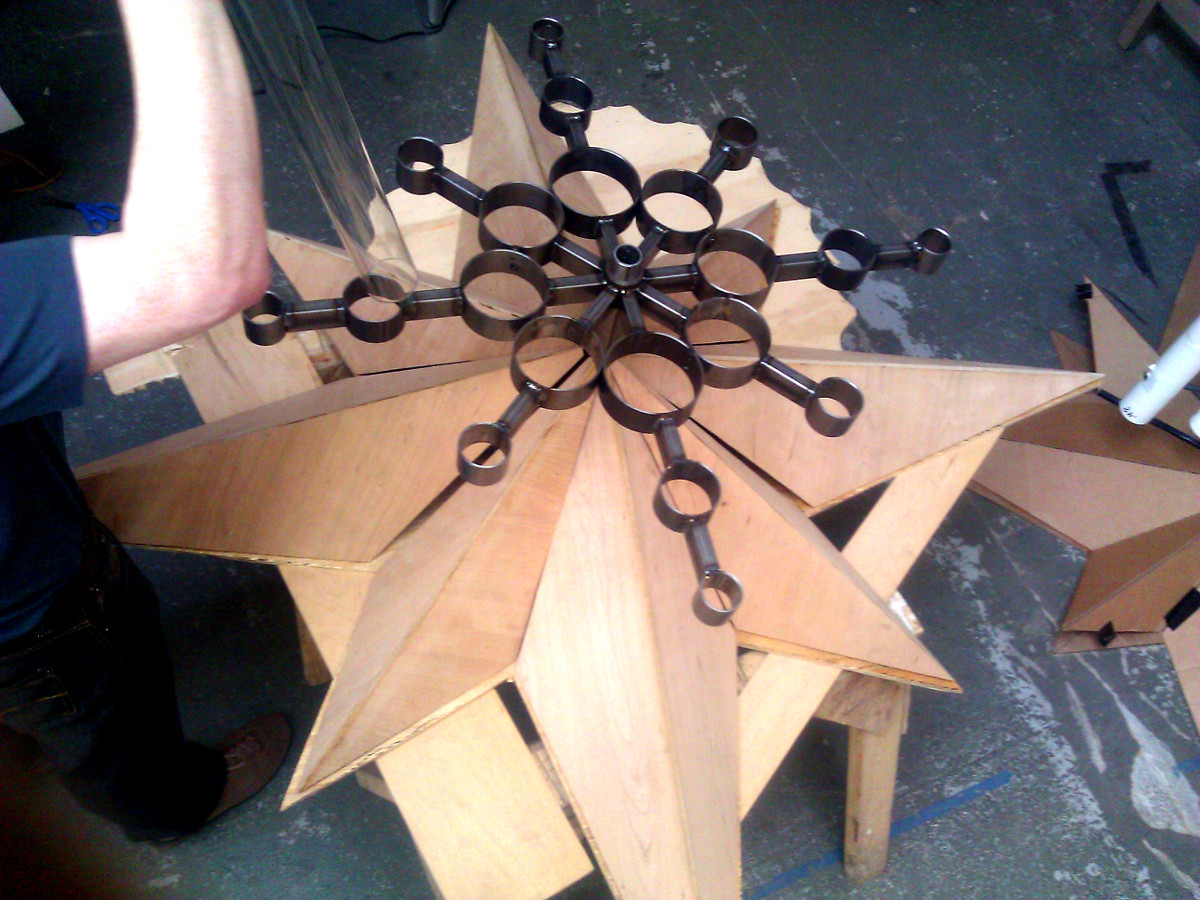
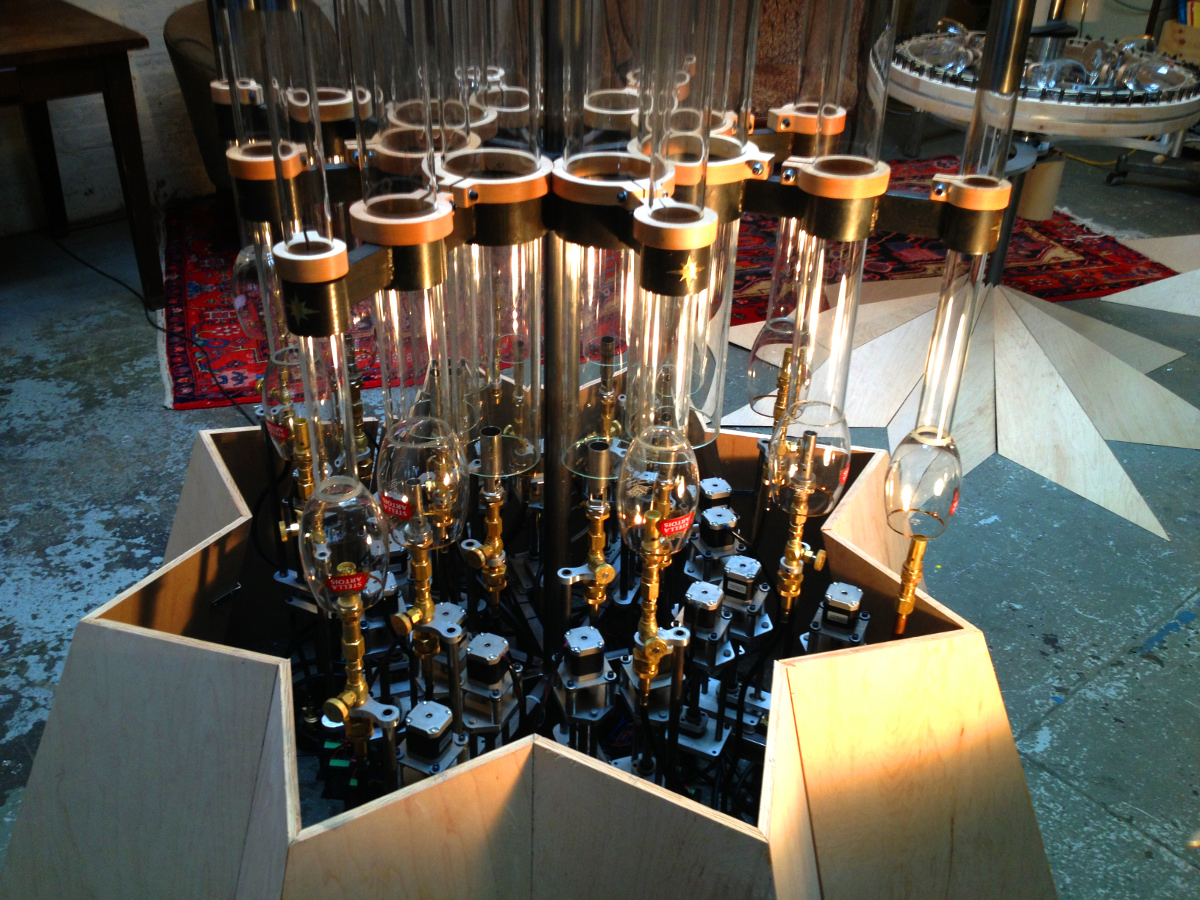
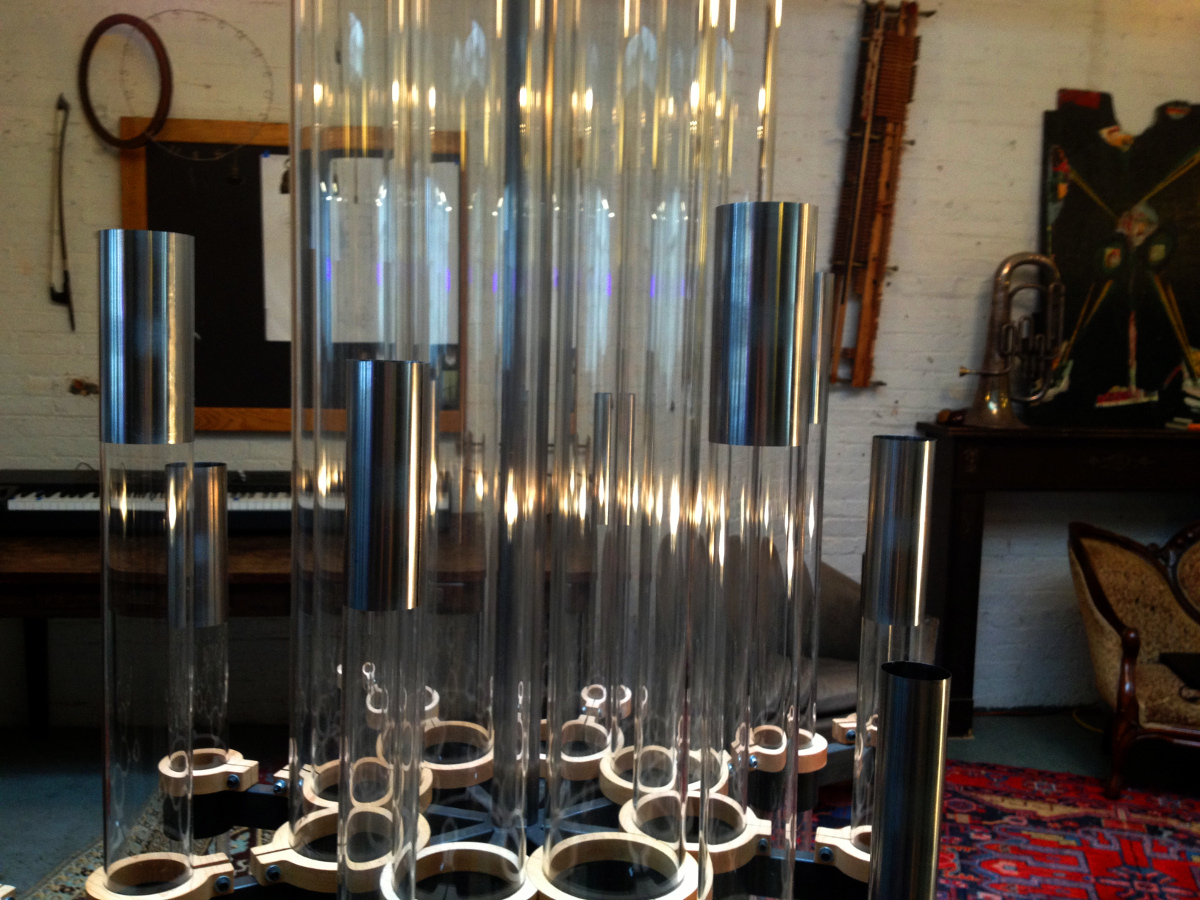
Finally adding the glass tubes.
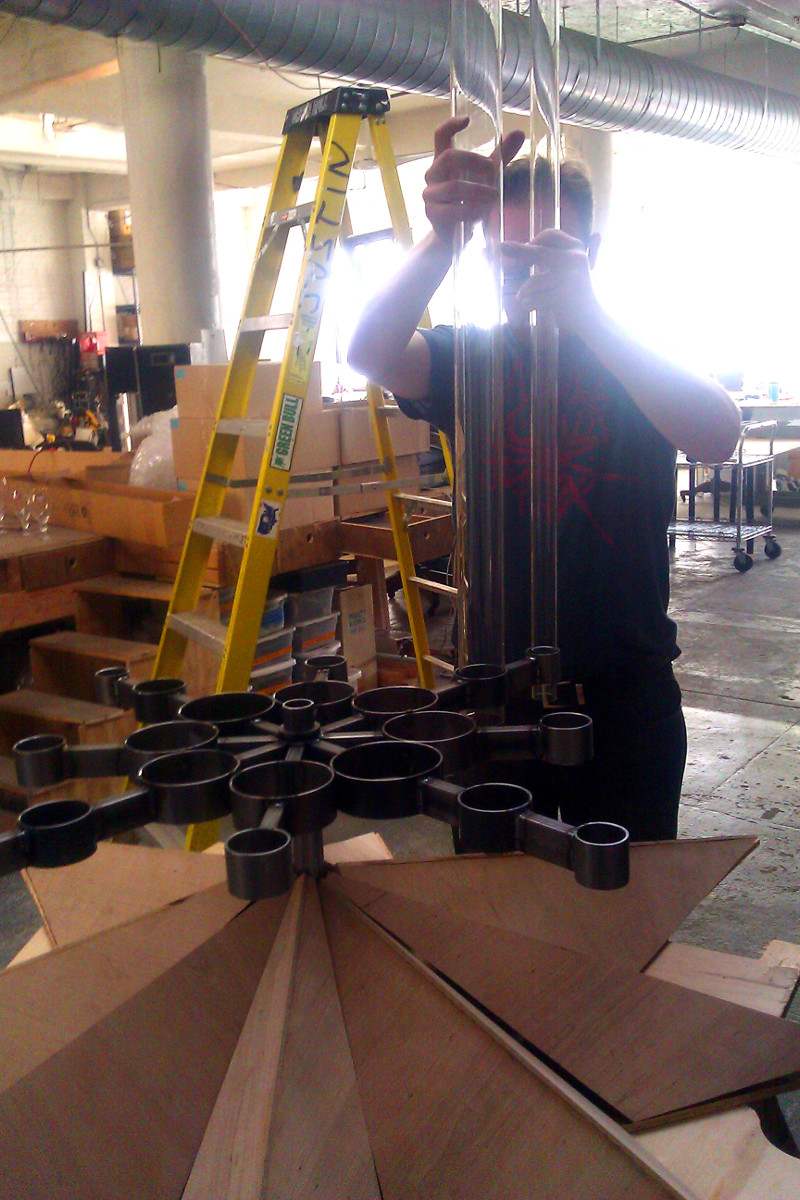
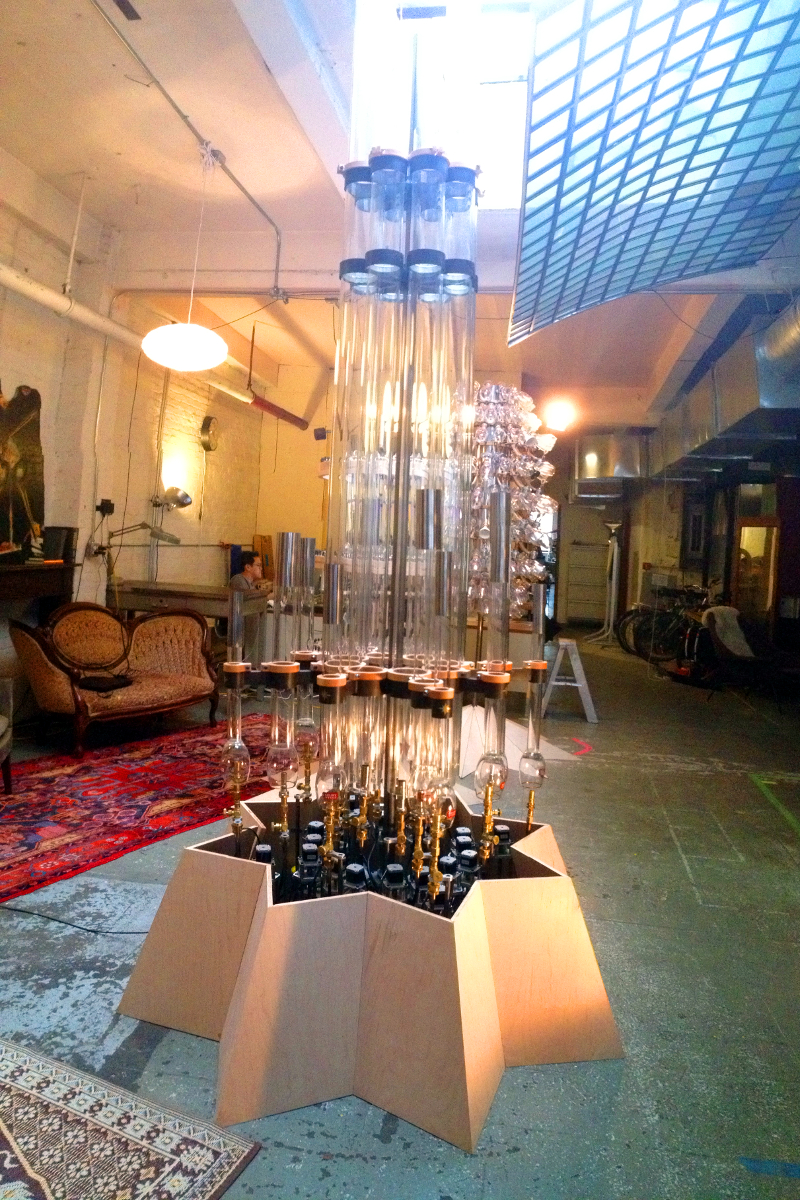
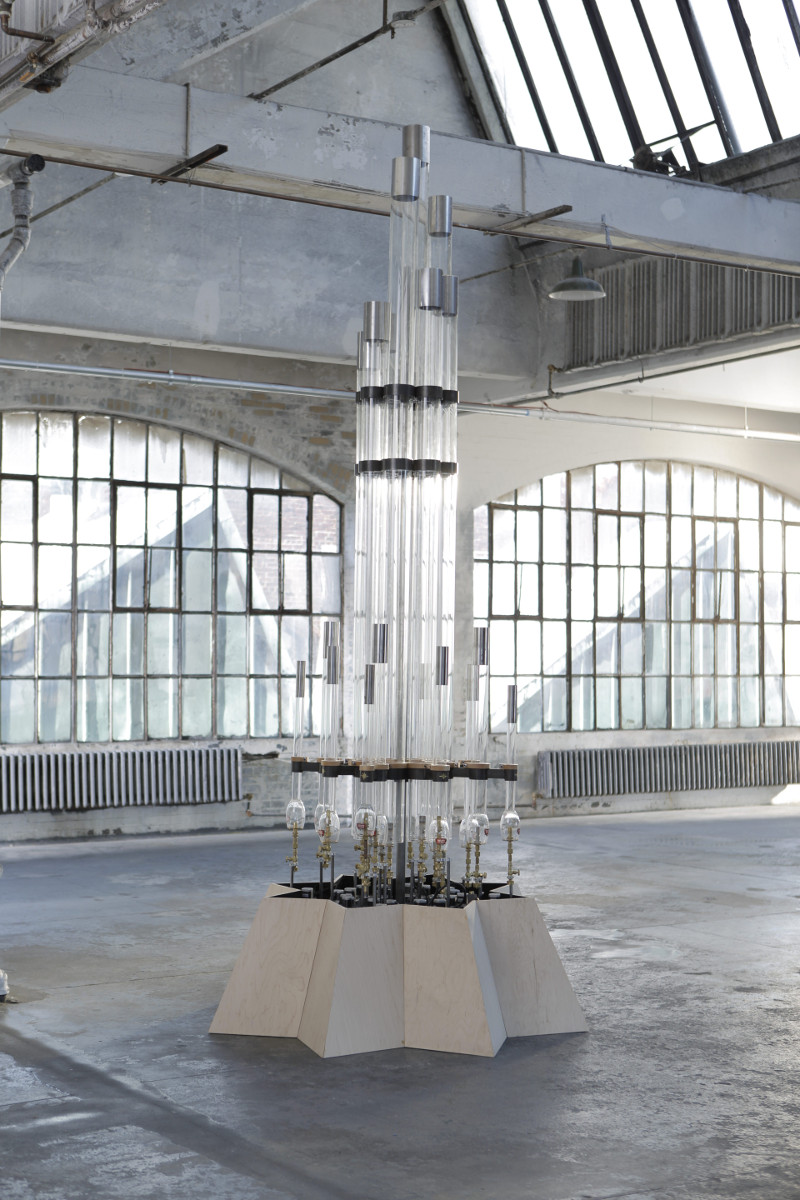
In our first sound tests, the low pitches shook the building and our bones. Much of the sound is too low for the microphone in this camera. But perhaps you can imagine.
And here is the whole Chalice Symphony documentary.